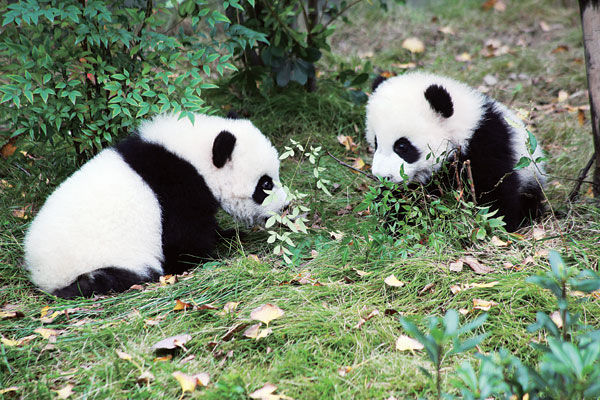Where past and present happily merge
 |
|
At the panda research and rescue centers, you can come face to face with China's most celebrated endangered animals. [Photo provided to Shanghai Star] |
History and industry make Chengdu one of China's most interesting cities these days. Add its famous black and white ambassadors to the equation and you have a winning itinerary. Pauline D. Loh takes the trip.
An enormous panda scales the facade of the IFS mall in the heart of Chengdu, peering over the wall into the rooftop sculpture garden that also houses a bright green dog with lolling red tongue, a humanoid rabbit poised for flight and a herd of two-dimensional ponies grazing on the lawn.
This is the modern facet of Chengdu, an ancient city that has been capital to historic dynasties as far back as the Three Kingdoms period (220–280).
To this day, Sichuan still adopts the prefix of Shu on its vehicle license plates, a reference to the original dynasty of that time.
The emperor of Shu, Liu Bei, and his empress are buried in Chengdu's Wuhou Temple, named after the shrine commemorating his military strategist Zhuge Liang. They rest within a hillock framed by gnarled gingko trees.
These are familiar names, historic characters in The Romance of the Three Kingdoms, first a literary classic authored by Luo Guanzhong in the 14th century, and reincarnated as an animation standard and popular RPG online game in the 20th century.
In an age where classics are just about as popular as school textbooks, many young pilgrims who visit this historic site are really thinking more in terms of their videogame characters. No matter, as long as the history lesson sticks.














